Decoupling Boiler and Installing Water Heaters in Century-Old San Francisco Apartment House Brings Relief to Residents Nothing lasts forever. That is especially true with mechanical fixtures, where the corrosive nature of water, the environment in which units are located and frequent use all work against fixture longevity. Nearly a century of service isn’t forever, but Read more
retrofit
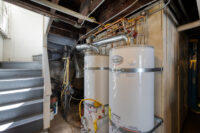
Decoupling Boiler and Installing Water Heaters in Century-Old San Francisco Apartment House Brings Relief to Residents
Nothing lasts forever. That is especially true with mechanical fixtures, where the corrosive nature of water, the environment in which units are located and frequent use all work against fixture longevity.
Nearly a century of service isn’t forever, but it’s a pretty good run. Some steam boilers, especially in inner-city buildings, that were installed in the 1920s and ‘30s are still in service. The reliance on steam-heated buildings in that era was a “direct result of theories of infection control” to help fight the global pandemic of 1918 and 1919, according to a Bloomberg article in 2020. Masks, shots and forced isolation fought against the most recent pandemic, but a century earlier the solution was far simpler – open the windows.
The theory followed the correct premise that fresh air would help fight off airborne diseases. In New York City, for instance, the Board of Health ordered windows to remain open to provide ventilation – even in winter. Steam heating and radiators thus packed plenty of punch. They provided heat for building residents on the coldest days and with windows open. Efficiency, obviously, was not top of mind when the boilers were installed.
In San Francisco, Excalibur Water Heaters solved a heating issue for an 8-bedroom apartment house that relied on a steam boiler that been in place since the building opened in the 1930s. The steam boiler provided hot water and radiant heat. “Because of the age of the boiler, the hot water was never reliable,’’ said Anthony Achermann, one of the owners of Excalibur.

An 8-unit apartment house in San Francisco solved a problem with hot water delivery by installing two American Standard Water Heaters to replace an aging and faltering boiler.
Excalibur designed a solution that solved the problem in just one workday. The company installed two American Standard Water Heaters to provide hot water to the building. Due to space limitations, Achermann’s team used two 50-gallon tanks instead of one 100-gallon tank. Even more interesting, the ancient boiler remained in place and will remain the heating source for the apartment house.
A Hot Mess
The simple solution would have been to repair the ancient boiler – again – or install a new one. Achermann knew neither would be terrific options.
Replacing the steam boiler would have required a lengthy wait due to supply chain issues. The boiler had been repaired and serviced frequently, but few products that are nearly 100 years old work like they did when they came out of the box. In addition, many repair technicians avoid a challenging boiler replacement project.
“Most plumbers in this industry when they see a boiler, they run,’’ Achermann said. “Boiler service people are few and far between these days. Retrofitting any building with a boiler is hard.”
The boiler – “about the size of MINI Cooper,” Achermann said — operated on a timer, so hot water availability differed throughout the day. “Sometimes hot water was readily available,’’ Achermann said. “Other times it was lukewarm or no hot water.”
Steam boilers undergo significant stress and age over time. Poor water chemistry, corrosion, extreme temperature shifts and even the environment where the boiler is installed can contribute to the degradation of a unit.
Caustic embrittlement due to corrosion is a serious form of boiler metal failure. Even worse, chemical attack of the metal is usually undetectable. Failure occurs suddenly, often with catastrophic results. While aging, the apartment house boiler still has enough juice to provide heat. Perhaps it will need to be replaced at some point, but for now it serves the building. Certainly, the building owner can hardly quibble after receiving a lengthy amount of service from the heating beast.
The project was part of a remodeling of the apartment house. “The steam boiler was as old as the building,’’ Achermann said. “If they wanted to replace the boiler, they would have had to wait weeks, if not months. It was a common problem, but I’m seeing it less and less. When I come into a situation like this, I try to identify an out-of-the-box solution that can solve the problem.”
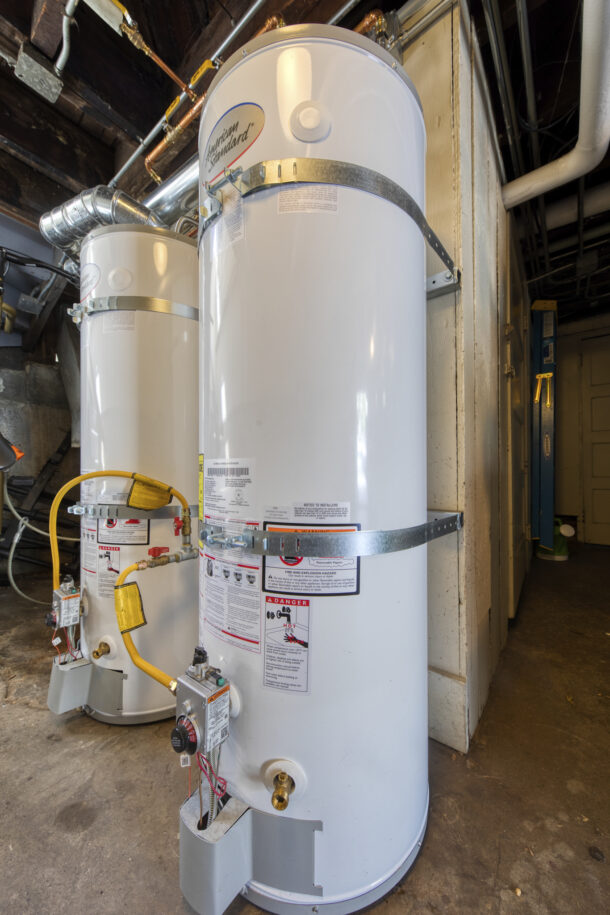
Due to the tight footprint of the mechanical room, Excalibur Water Heaters installed two 50-gallon tanks instead of one 100-gallon tank.
Splitting Service
Achermann solved the issue by decoupling the boiler from providing hot water. The in-place boiler still runs the heating system for the apartment house, but his team installed two American Standard Water Heaters for the building’s hot water service.
Because of space issues, Excalibur installed two 50-gallon tanks. “We didn’t have the space or the height clearance to install a 100-gallon tank,’’ Achermann said. “It was a pretty tight fit.”
The durability of the American Standard Water Heater brand was important to their inclusion in the project. “Over the years, water heaters have been getting lighter, they are making the walls on many brands thinner,’’ Achermann said. “Over time, water will try to corrode the tank. Anode rods are supposed to prevent that, but eventually they’ll leak and fall apart. The water doesn’t have anywhere to go, and it leads to leaks. By having a heavier tank, it’s buying more time.”
One of the most dangerous tasks for the project involved separating the boiler and installing the water heaters. With the gas and water lines coming into the building, the team took extreme care to complete a smooth transition.
“It’s important to understand the severity of what could happen if something goes awry,’’ Achermann said. “If something goes wrong, it could create a pressurized vessel that can cause an explosion. We had to make sure the steam radiators work appropriately, and that the boiler only has to make the steam.”
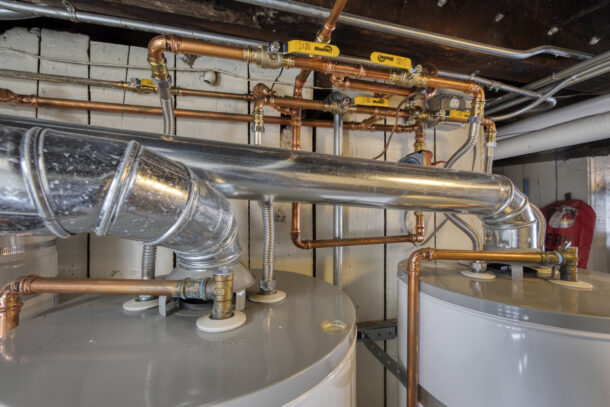
Additional Benefits
The warranty and burner assembly on the American Standard Water Heaters also factored into the selection for the project, Achermann said.
“With many manufacturers, the water heaters just make it past the warranty,’’ Achermann said. “The American Standard Water Heaters last well past their warranty date. They are also the only manufacturer in the San Francisco area that uses a mechanical gas control valve.”
The gas control valve is a traditional assembly that has served the industry well for decades. Many newer models have electronic assemblies that break down far earlier. “The electronic ones are harder to repair, while the mechanical heaters are much more robust overall,’’ he said. “I was getting tired of explaining why a unit we installed two years ago was failing.”
Workers completed the 10-hour project safely, and tenants celebrated that consistent hot water would flow to their apartments without interruption. “They’re excited because they now have consistent hot water,’’ Achermann added. “Sometimes it would take 3-4 minutes. We installed a recirculation pump and now the water gets hot within seconds.”
Overall, the project married Excalibur’s ingenuity, durable products and working with mechanicals already in place. Sometimes plumbers don’t have to re-invent the wheel. Making a few subtle tweaks saves time, money and energy, even if the units were around during the Hoover administration.
“It was a project that required some creativity as to how we could solve the problem,’’ Achermann said. “We came up with a good concept and the owner and the tenants are happy.”
Thomas Renner writes on trade industry topics for publications throughout the United States.
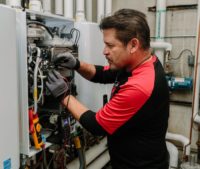
With an enrollment of more than 27,000 students, the University of New Mexico is the state’s largest college. It’s known for its strong and historied athletic programs, particularly the Lobos football and basketball teams, which compete in the Mountain West Conference. Dreamstyle Stadium has been home to the Lobos football team for 60 seasons. The Read more
With an enrollment of more than 27,000 students, the University of New Mexico is the state’s largest college. It’s known for its strong and historied athletic programs, particularly the Lobos football and basketball teams, which compete in the Mountain West Conference.
Dreamstyle Stadium has been home to the Lobos football team for 60 seasons. The 39,224 seat football stadium is attached to the L.F. Tow Diehm Athletic Facility. Tow Diehm, who’s known as the “Father of Athletic Training” in New Mexico, served as UNM’s athletics trainer for 31 years.
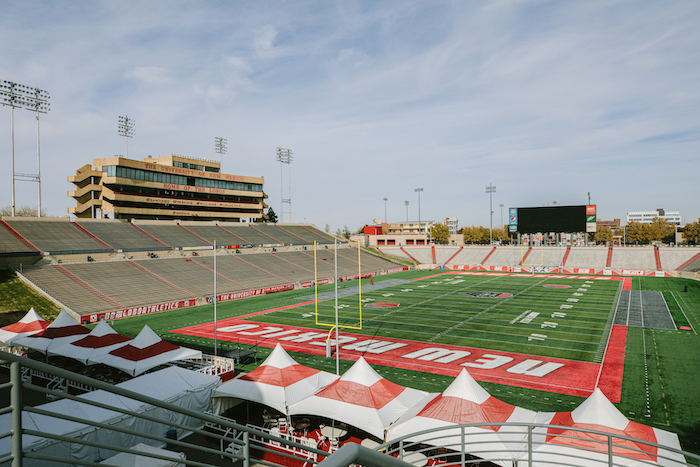
Inside, the facility includes athletic offices, common areas, locker rooms for both home and visiting teams, and a weight room that underwent an $800,000 renovation in 2014.
A more recent renovation took place in the facility’s primary mechanical room. Over the past few years, the domestic hot water system began failing. Nonstop pump failures, electrical problems, and a leaking hot water storage tank plagued maintenance crews.
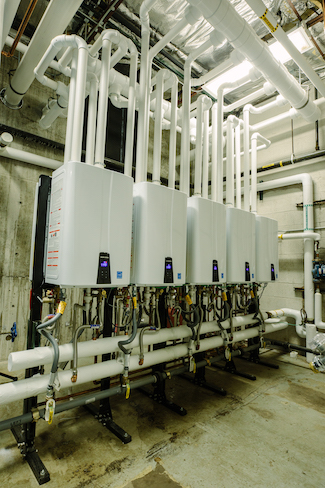 These problems inevitably surfaced at the worst times, like game day. The system provides hot water to all fixtures within the building, including the home and visitor locker room showers.
These problems inevitably surfaced at the worst times, like game day. The system provides hot water to all fixtures within the building, including the home and visitor locker room showers.
“We were frequently called in after hours to tend to the old system,” explained Richard Van Damme, HVAC master for the University of New Mexico. “At one point, we had even drained the 1,600 gallon storage tank for replacement, only to fill it again a few days later for game.”
Hot water was being supplied by two large, atmospheric volume water heaters with capacities of 490,000 BTUH each. The maintenance department had been pushing for replacement for a number of years. The cost of maintenance was rising, outright failure was imminent, the system’s dependability was lacking and efficiency was a concern.
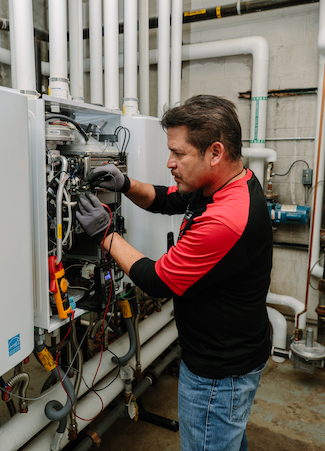
“When we received a work order to replace the failing system, we evaluated a straight, in-kind replacement with standard efficiency water heaters. Installing a similar storage tank would’ve required removing part of the roof. We also looked at tankless style system options. Energy savings was a big consideration, as was redundancy and serviceability,” said Jesse Hart, facilities engineer for UNM’s facilities management department.”
“There are short periods of high demand, with low or no demand otherwise,” he continued. “The showers aren’t even used year-round, so the application lent itself perfectly to a hi-efficiency, low-volume hot water system. Standby heat loss from the big tank was significant.”
UNM looked at various tankless products and contacted their local Navien representative, Jordan Mahboub, at RepNet. Mahboub and Hart worked closely with Navien sales engineers to create a design based on the peak hot water demand at the L.F. Tow Diehm Athletic Facility: 82 gallons per minute at 120F. The university wanted the ability to meet peak demand with one or two units offline.
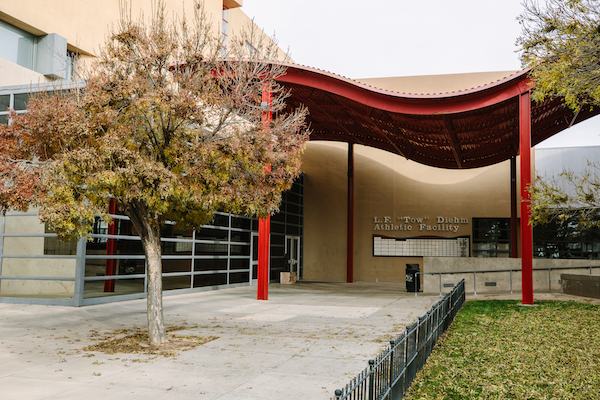
Once the design was approved, Futures Mechanical was hired for the replacement. The volume water heaters and storage tank were removed and 18 Navien NPE-240S condensing, tankless water heaters were installed.
The NPE-240S is a 199,900 BTUH condensing, wall-hung water heater that features dual stainless steel heat exchangers, a 10-to-1 turndown ratio, and efficiencies up to 97 percent. The unit also provides LEED points, where applicable.
Water heaters were installed in two independent systems, one on either side of the mechanical room to serve each locker room. Navien’s Ready-Link manifold system was used to simplify the installation and save space.
The Ready-Link Manifold System provides everything required for a multi-unit installation, including manifolds for water and gas, racks for floor mounting, valves, connections and flex lines.
Up to 16 NPE-240 units can be common vented, so only four roof penetrations were needed at the athletic facility.
“No intricate programming was needed to cascade this many units in a single system,” said Van Damme. “By using the factory-supplied cascade cable, the logic built into the units does all the thinking. If for some reason the master unit goes down, the next unit in line takes over, so there’s no downtime in the event of a unit failure.”
“Having Jordan Mahboub here during commissioning helped us learn all the advantages of the Navien system,” Van Damme continued. For example, each rack requires a single gas regulator, not every unit. The manifold system lets us isolate any unit in the group for service without taking the others off-line.”
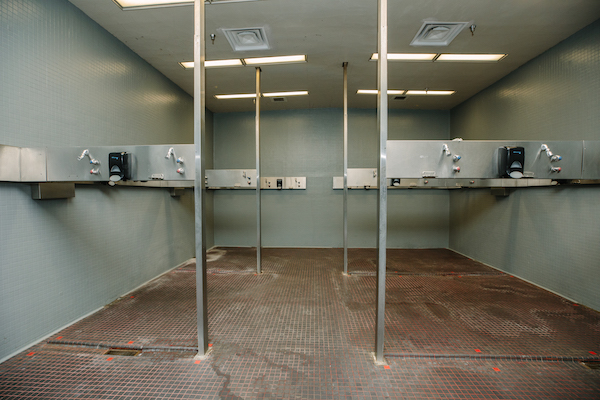
When the new system was tested, every hot water fixture in the facility was opened for almost two hours. The units cascaded to meet demand, but never fired to 100%. According to Van Damme, full capacity was met and sustained while the systems are operating at 60% input.
“The modulating component was a feature we really wanted,” Hart said. “Each of these units provides a 10-to-1 turndown, so no matter if there’s one sink or 20 showers running, we can accurately match the load. We’re not using energy beyond what’s needed to meet the actual demand. Now that the system has been operational for over a year, we’ve found an annual natural gas savings of 2,282 Therms.”
The entire project took three months over the 2018 summer break. The installation was seamless, and was completed just in time for football season. There’s now more space to service the water heaters or work on other equipment within the room.
“I think this system is a great asset to the stadium,” Van Damme said. “The money saved on maintenance alone is significant. We’ve been so impressed with these units that we’ve decided to use Navien systems in other locations across campus.”
